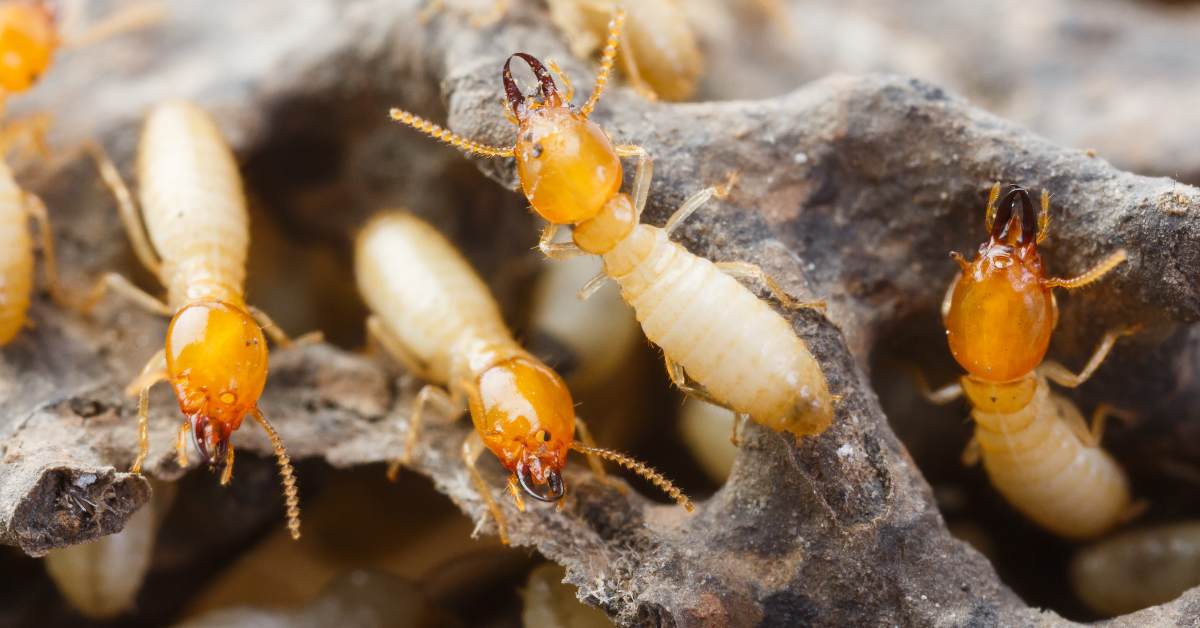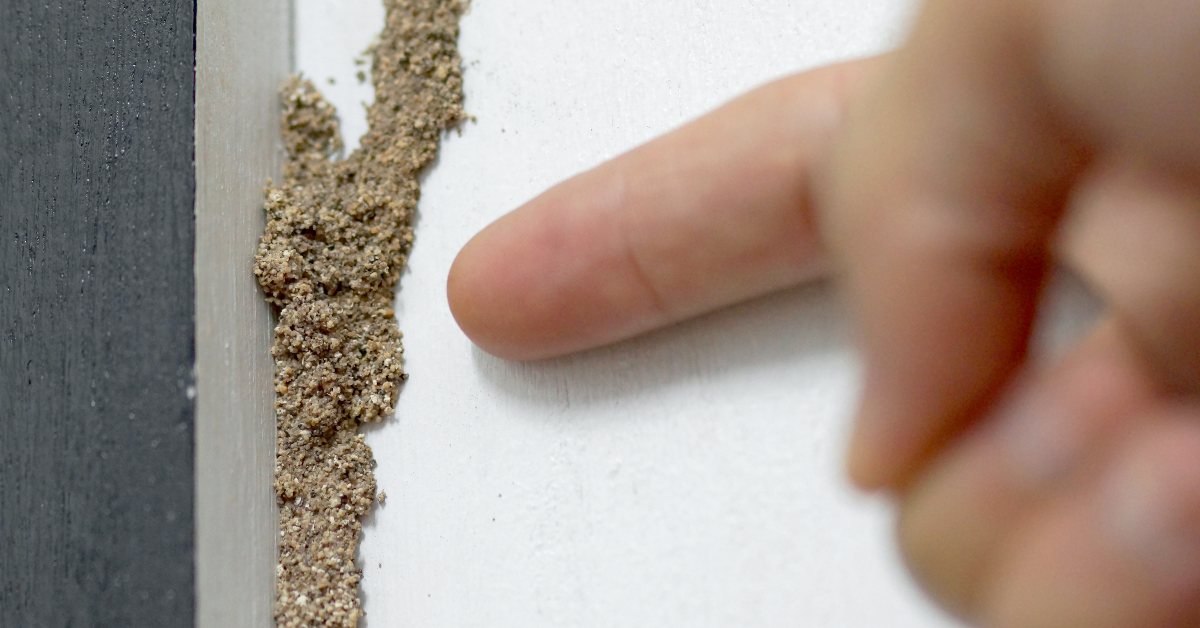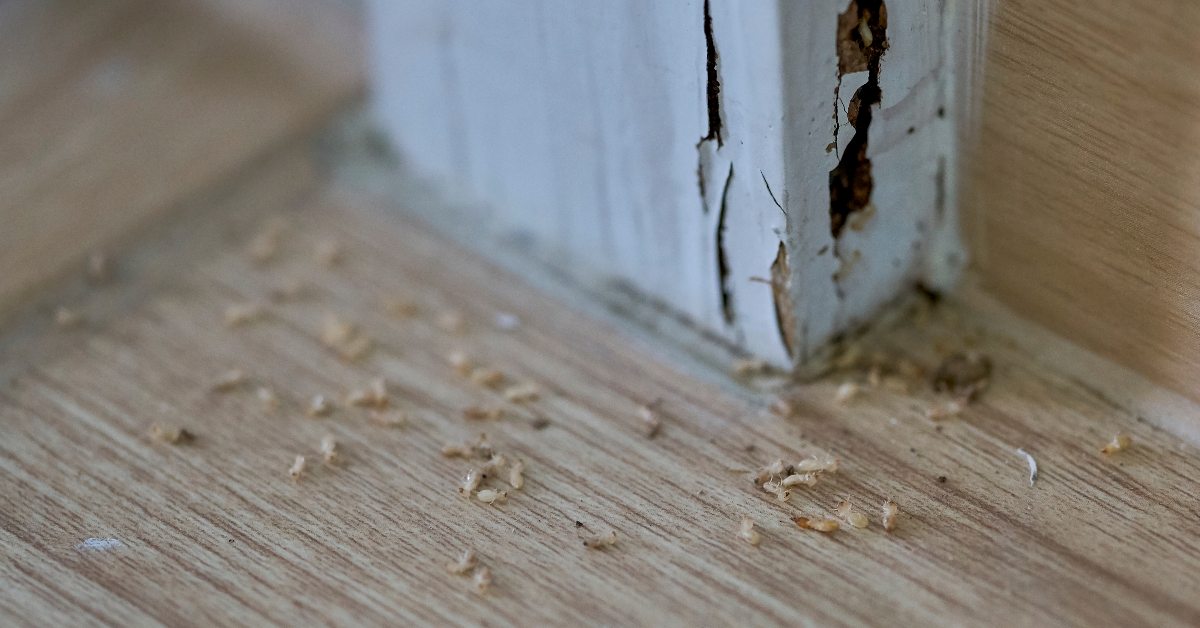Termites are a fear many Australian homeowners have, and rightfully so. These little insects can do a lot of damage and repopulate from dwindling numbers. That’s why it’s essential to get proper pest control right away.
At Cure All Pest Control, we’ve earned the nickname ‘The White Ant Man’ because we’ve spent years solving termite problems in Australia. If you think you’ve noticed even the slightest signs of termite damage, give us a call to organise a termite inspection or termite treatment. Trust us, it’s much easier to sleep soundly knowing the structural integrity of your home is safe.
There are 20 recognised species of termite in Australia that are able to chew through wood anywhere in your home. Here are 7 signs that you may have termites crawling around your home.

Noises Inside The Walls
Termites are noisy eaters, and if you have them munching on your home, you probably can hear them during the quieter parts of the day. Keep an ear out for quiet clicking within your walls when there’s no other noise in your home.
These sounds are noticeable signs of termites but are easily hidden in a noisy household. You also won’t always hear them at night since different types of termites are active at different times of the day. For example, subterranean termites swarm during the day, particularly after rainfall, while Formosan termites tend to swarm at night.
Visible Damage Or Powder On Floors
Termites gained their reputation for devouring wood, but they can feed on much more, especially softer building materials like drywall, plaster or even laminate floorboards. If you spot cracks, blisters or other signs of damage, it could be termites. Since termites eat things from the inside out, test around to see if anywhere feels thinner.
It’s always wise to search around your wall skirting for signs of movements or a gathering of wood/plaster dust that could be caused by termite damage. This is often an unviewed entry point for many insects.
Droppings
Obviously, droppings are one of the quickest ways to identify a pest. However, not all termites leave them behind, because the others build with theirs! Yuck. Drywood termites are the type that will leave their dropping around as evidence. They push their excrement out of their nest which leaves small black stains or a dark powder. Luckily this often points directly to a nest so a termite control expert can make quick work of them.
Subterranean termites are harder to find and rarely leave droppings behind, instead using them to sculpt their tunnels and underground nests. These tunnels will be how a pest control expert identifies the latter type. Read on to find out more.

Flying Termites
Keep an eye to the sky. If you notice white flying insects then what you’re seeing could be swarmers looking for a mate to establish a new colony. Most dry wood termites swarm after rain, so during those times lookout for strange-looking flying bugs, especially during summer or spring.
If you remember seeing something similar before but haven’t seen any since, look around your property for discarded wings. When these bugs find a mate they shed their wings. This could be a sign that a young nest is being started nearby. The new pair of lovers will find softwood and seal themselves inside to start a new colony… romantic.
Mud Tubes
These are like highways for termites that allow the subterranean critters to travel around while still under protection. Australia’s most common termites are subterranean, so they need shelter when they’re moving around.
Mud tunnels can be pretty hard to spot, and can even look like dirt streaks caused by rain. However, they often trail up walls or buildings. They are made of dirt and droppings, which help them keep shape better than normal mud.
In Australia these are among the most common signs of a termite infestation. The wider spread these tunnels are, the more exposed your home is to pests.
Swollen Wood
When termites eat, they produce moisture. When wood is exposed to this from the inside it can create swelling and expansion. If your windows and doors become stiff and hard to close properly, it could indicate termites are inside.

Hollow Wood
Obviously, you’d want to recognise the signs of termites before they cause too much damage. Unfortunately, that’s not always the case. In many cases, Aussies don’t see the signs until they tap on a roof support beam and hear a hollow echo inside.
As we said earlier, termites will eat the wood of your home from the inside out. In the worst cases, they will leave only a thin veneer, or just the paint behind. If your wood sounds hollow or papery, you may have a bad case of a termite infestation.
In worst case stories you’ll hear about someone leaning on a wall and falling through, or maybe a vacuum breaking through a skirting board.
Get An Inspection Today
Want to make sure your home is termite safe? Contact Cure All Pest Control today for an expert termite control service. Our termite control experts are thorough and can solve your problem quickly. Get in touch today for a quote.



